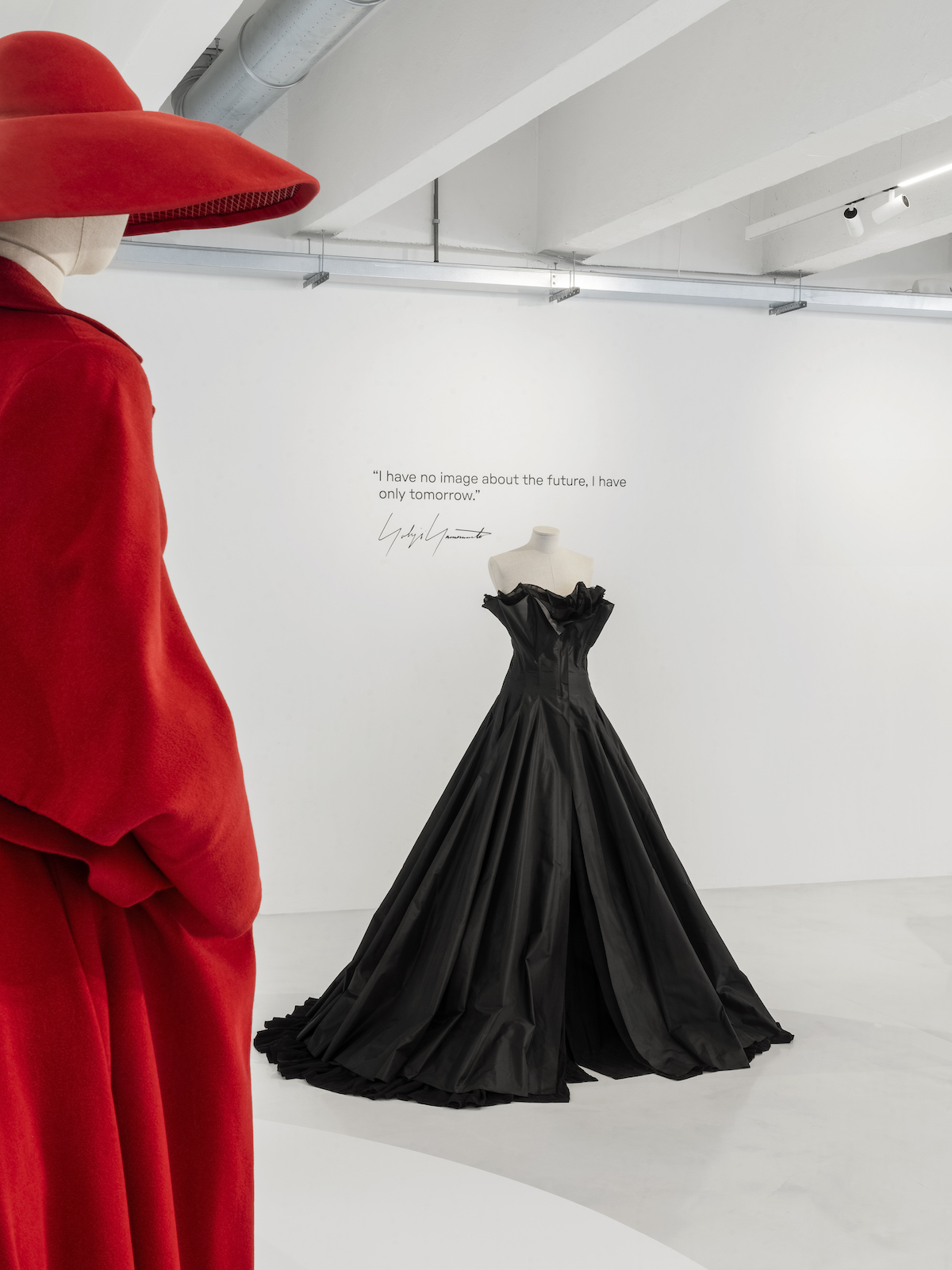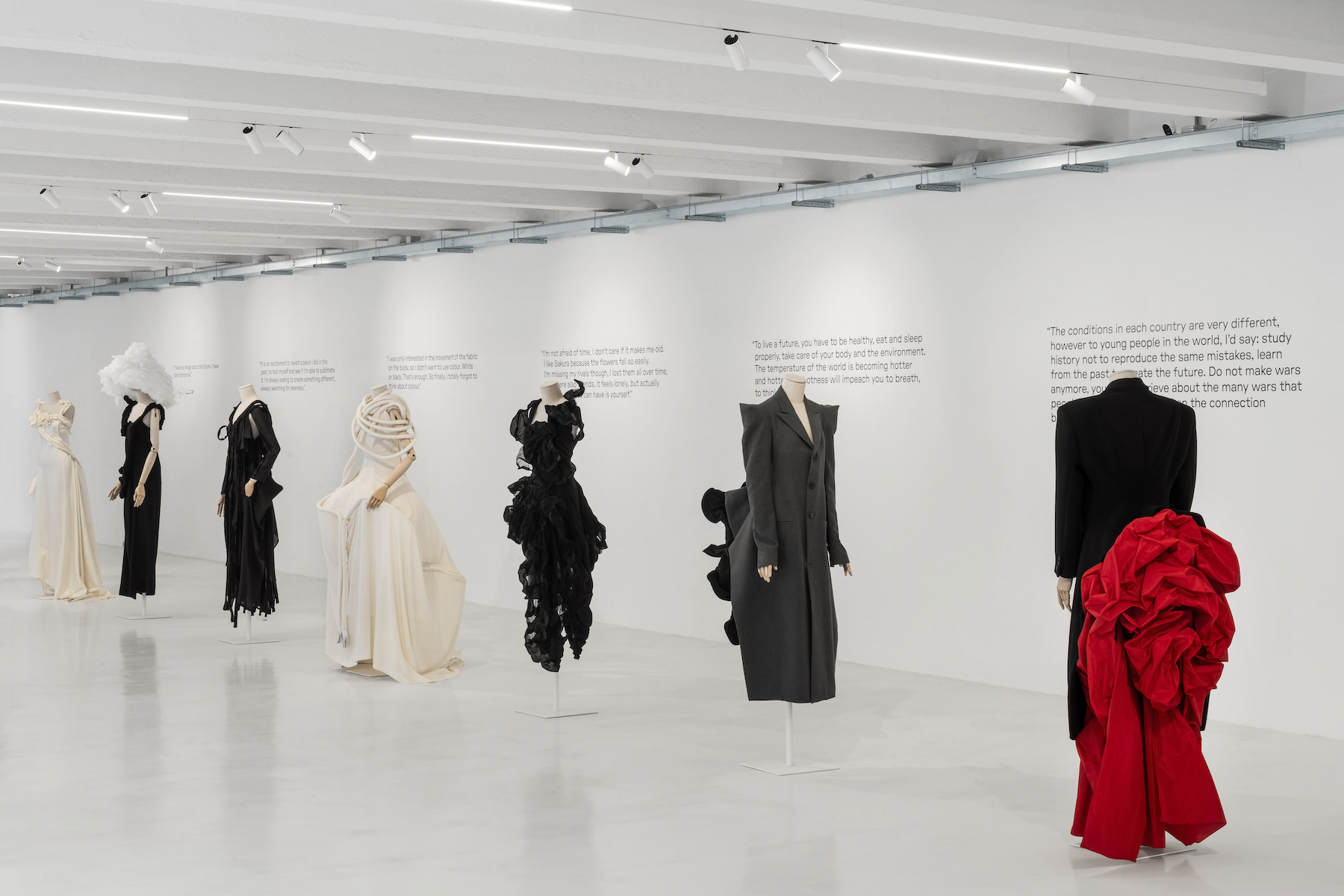
If there’s one throughline in Yohji Yamamoto’s work – besides a penchant for the colour black – it’s his dedication to silhouette and form. Sometimes subtle, sometimes challenging, and always unexpected, this USP has carried his career from the halcyon days of 1980s Paris all the way to the present day. His latest exhibition, ‘Yohji Yamamoto: Letter to the Future’ at 10 Corso Como in Milan (until 31 July 2024), encapsulates the anti-trend approach that makes his garments eternally covetable.
Held inside the concept store’s newly launched gallery space – one of many additions that followed 10 Corso Como’s architectural revamp, which began earlier this year – the display has been curated by the fashion academic Alessio de’ Navasques. Tightly edited, it spans from the A/W 1986 bust-behind tailcoat (famously photographed by Nick Knight) to the latest, sharpened-shoulder A/W 2024 iteration. Opening the show, these two designs face one another (shown below), both inspired by a French costume design technique known as faux cul, or in English, ‘false bottom’. ‘He really likes to see women from the back,’ says de’ Navasques.
‘Yohji Yamamoto: Letter to the Future’ exhibition at 10 Corso Como, Milan
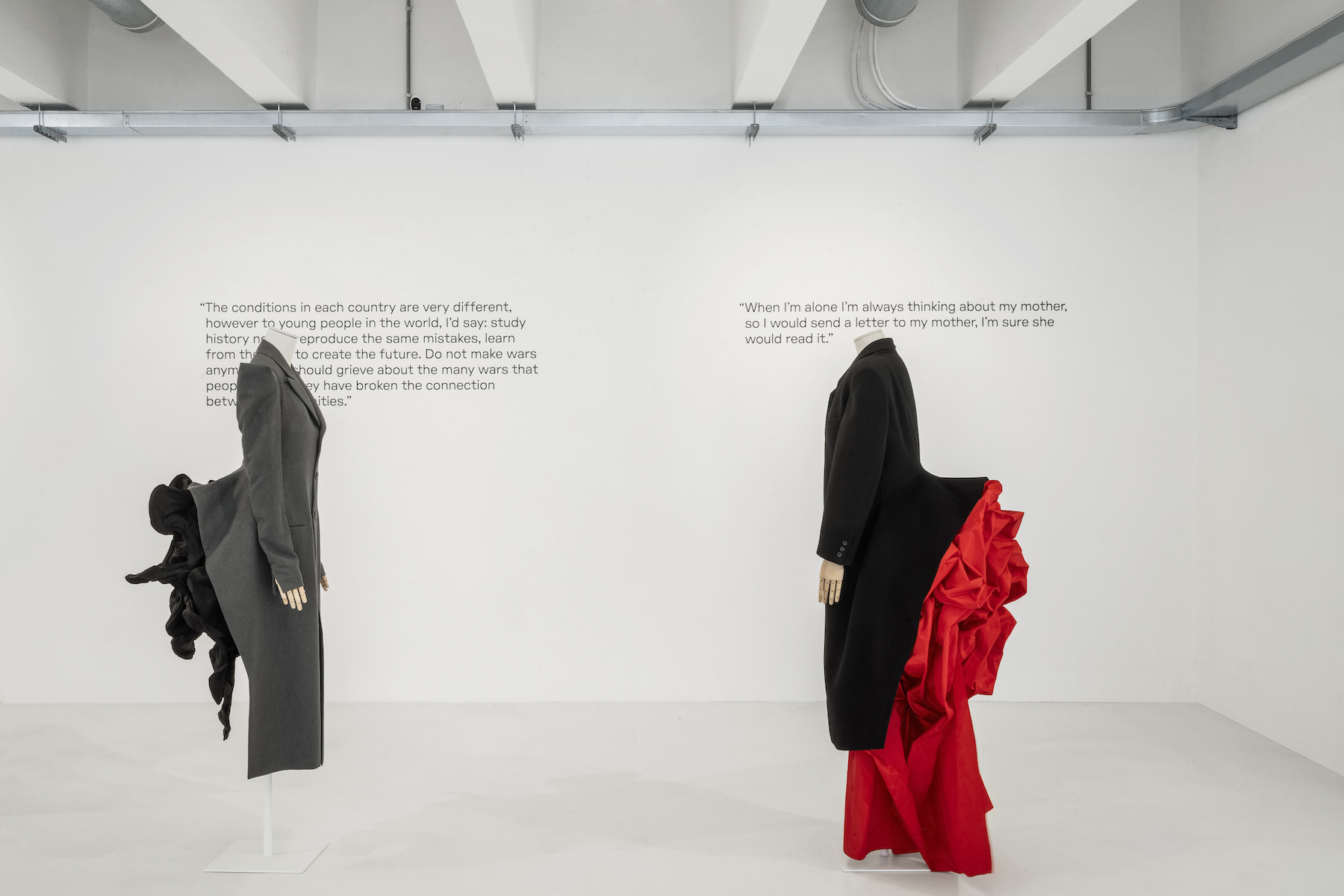
The space is artfully arranged, comprising key designs in Yamamoto’s oeuvre, mostly in his favourite shade, peppered with whites and greys, and a few charges of red (‘It’s passion,’ says de’ Navasques). On the walls, quotes by Yamamoto offer insight into his design philosophy. Perhaps the most important is one dedicated to his mother, which reads, ‘When I’m alone, I’m always thinking about my mother.’ Indeed, de’ Navasques describes her as Yamamoto’s earliest link to fashion, always wearing black and simple workwear – the lifeblood of Yamamoto’s label.
Yamamoto grew up in the ruins of post-war Japan, losing his father early in life. As such, he spent his childhood surrounded by women, not least his mother, as well as observing the sex workers of the Tokyo neighbourhood of Shinjuku where he grew up, then an area of yakuza gangsters and organised crime. Looking at the show, these nascent, long-held feelings manifest themselves in protective, shrouding designs that both obscure and celebrate the female body without sexualising it. The A/W 1995 rework of Dior’s bar jacket – Yamamoto loves to twist the codes of French couture – is a case in point, cinching at the waist before opening out into what looks like a skirt, but is rather a dress, cut like a cape.
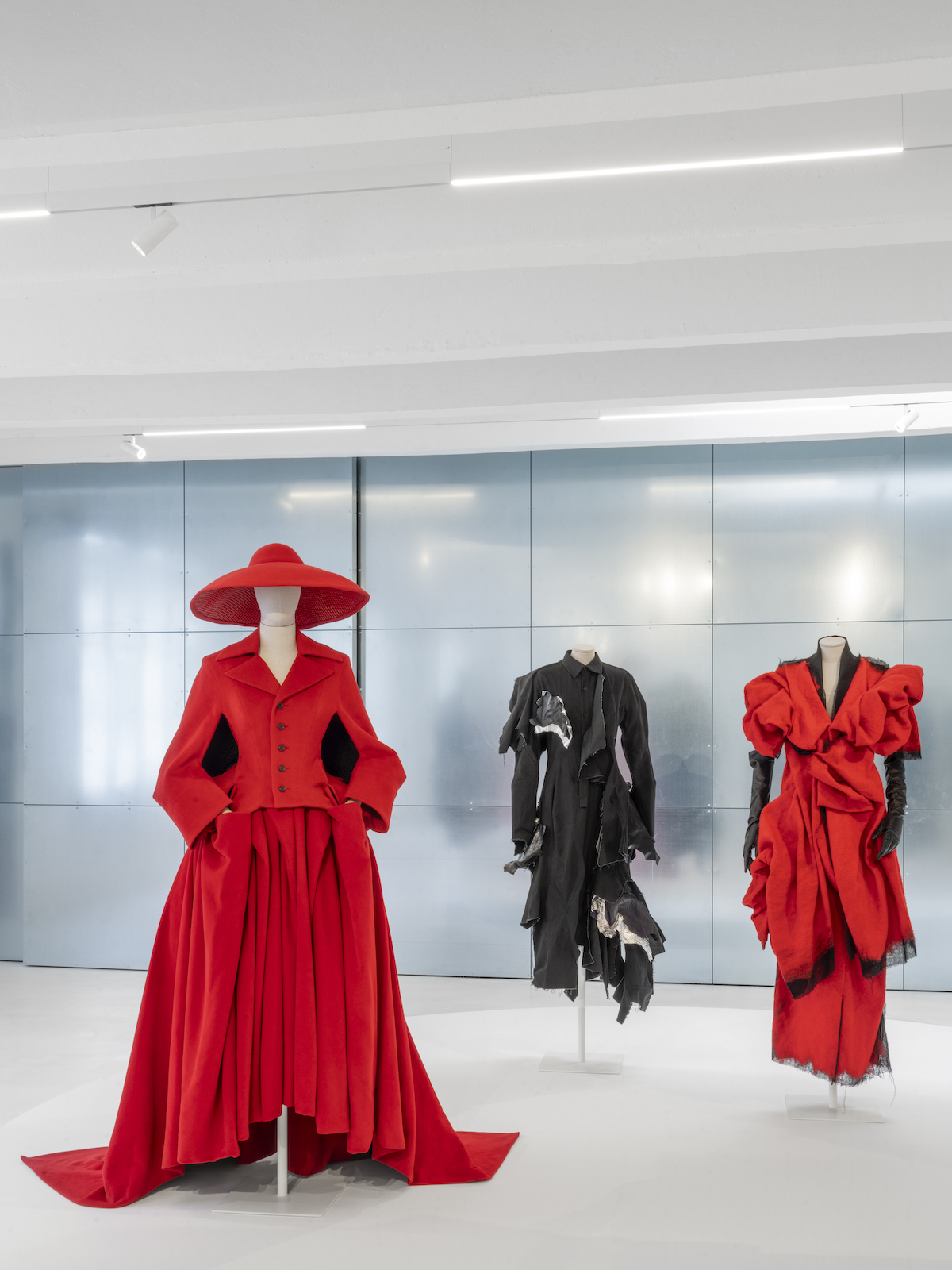
The designer’s deft skill in merging Eastern and Western style appears throughout the exhibition. Here, a stark black gown from his S/S 1999 marriage-themed collection proves exemplary. Slit down the front and sealed at the top, it has the imposing silhouette you’d expect of a corseted bridal design, except its construction shares more in common with a kimono. Across the breast, the trussed-up edges call to mind wrapping paper, perhaps quipping on the tradition of ‘giving away’ a woman to her husband.
Elsewhere, the wabi-sabi touches synonymous with Yamamoto’s work appear in heavily deconstructed, lacerated shirting and nighties, as well as punkier pieces, like the wrapped, shibari bondage knot dresses. ‘I think that’s the big difference to Rei Kawakubo,’ says de’ Navasques. ‘[At] Comme Des Garçons, it’s more artistic processes, and at [Yohji Yamamoto], it’s more around the atelier, the process of making someone feel good and comfortable.’ The famous, albeit little documented A/W 1996 design, where Yamamoto applied the origami technique to a sizable wrap of wool – shaped and pinched at the back and sliced along the flanks – embodies this very essence of doing more with less.
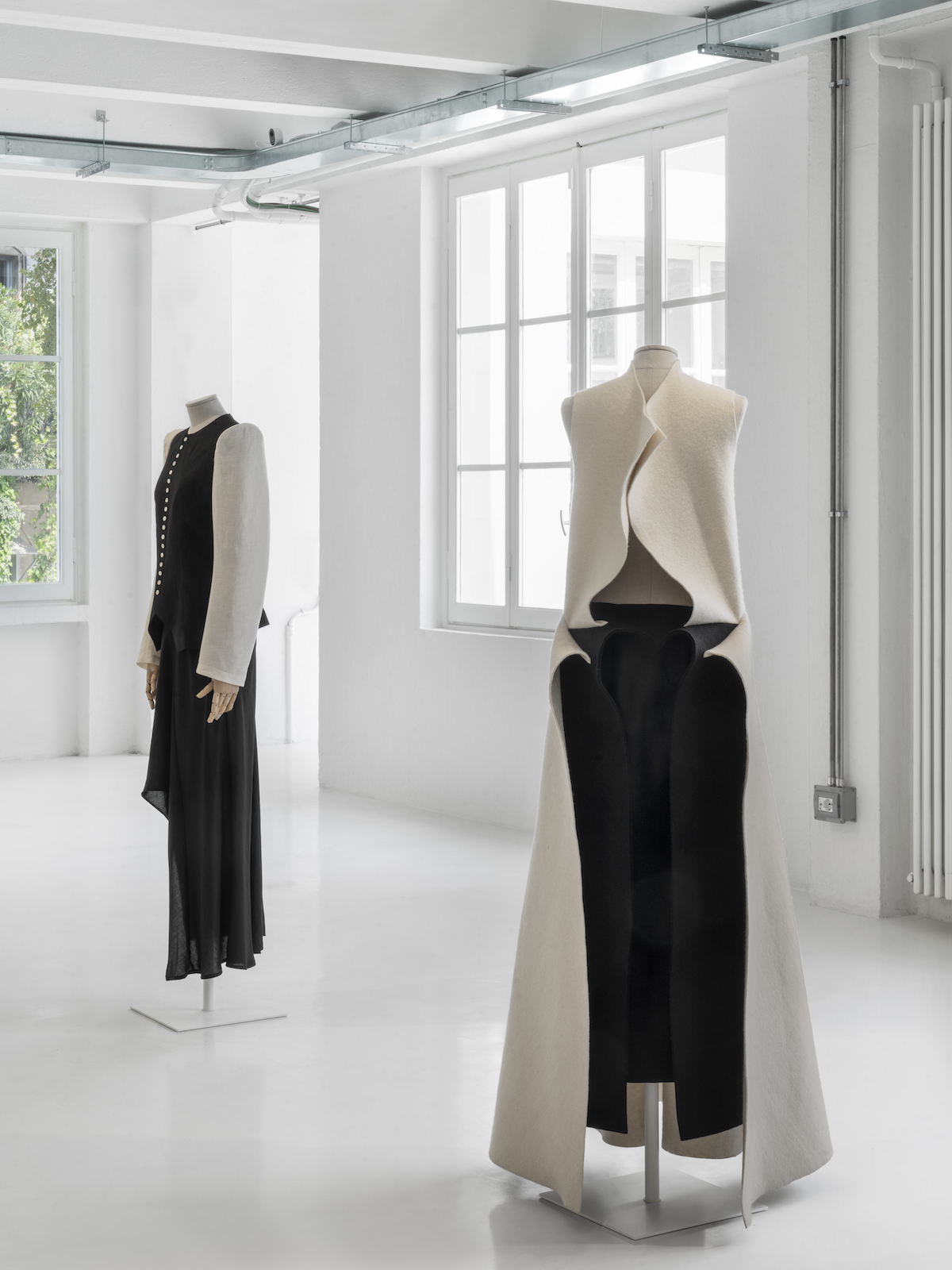
It’s his restraint, though, which makes his clothing stand the test of time, alongside a refusal to bask in his legacy. ‘He hates fashion exhibitions,’ says de’ Navasques. ‘Especially retrospectives!’ Clearly, this felt contemporary and tangible enough – unlike the sometimes stale museum shows – to keep the Yamamoto story alive and entice the man himself to give it his co-sign.
‘Yohji Yamamoto: Letter to the Future’ runs at 10 Corso Como Gallery, Milan until 31 July 2024.
